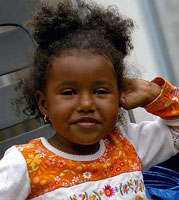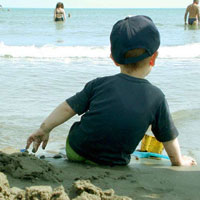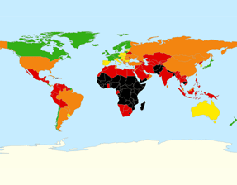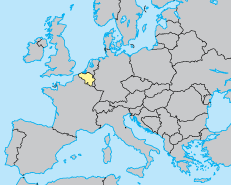Children of Belgium
Realizing Children’s Rights in Belgium


Regardless of being a good example regarding children’s rights, Belgium still faces problems in this area. In fact, difficulties stemming from child abuse, handicapped children, unaccompanied minors etc. are present in this country, and have not yet found suitable solutions to remedy these problems.
Population: 10,4 million Life expectancy: 80,6 years |
Main problems faced by children in Belgium:
Even though Belgium is one of the richest countries in the world, poverty affects a group of children, with consequences that are detrimental to their lives. In particular, poverty restricts their access to education and health care, which are based on the parents’ economical situation. As a result, children in single parent families and children of foreigners do not have the same opportunities as others.
Seemingly, in Belgium, children with a physical or mental handicap do not have the same opportunities as others. And in general, they do not have access to regular schooling.
In addition, Belgium still has progress to make with regards to the rights of children with mental disorders: better support for these children is in fact necessary so that they can enjoy more satisfying living conditions.
Today, these children are widely discriminated against, isolated from the outside world and rarely heard from; their silence is especially due to an “abuse” of medication.
 The Committee on the Rights of the Child has indicated that the Belgian integration policy violates human rights, in particular, that which deals with unaccompanied foreign children. The system is largely inadequate at providing support for child refugees. Respect for their rights is not properly guaranteed, as there is a lack of infrastructure and personnel to receive these unaccompanied minors (UAM).
The Committee on the Rights of the Child has indicated that the Belgian integration policy violates human rights, in particular, that which deals with unaccompanied foreign children. The system is largely inadequate at providing support for child refugees. Respect for their rights is not properly guaranteed, as there is a lack of infrastructure and personnel to receive these unaccompanied minors (UAM).
Living conditions of asylum seeking families are also very precarious. A lack of space in the welcome centers forces some of them to live on the streets.
Unfortunately, abuse and violence against children exist in Belgium and one third of these cases are related to sexual abuse. A large number of the calls received by child support services concern children who are the victims of domestic or sexual abuse. For example, in Flanders, child abuse is the second leading cause of child mortality. Children’s rights delegates have therefore made this issue a priority.
The Convention on the Rights of the Child prohibits all forms of violence against children. Nevertheless, corporal punishment is not explicitly forbidden by Belgian law. It is therefore practiced on a daily basis in some families, especially since this type of punishment is still a well-established custom.
Juvenile justice
The administrative and judicial proceedings in Belgium do not sufficiently take into account the opinion and interest of the child, which is contrary to Article 3 of the Convention on the Rights of the Child (CRC) according to which: “the best interests of the child shall be a primary consideration.”
Furthermore, the juvenile justice system is sometimes ignorant of children’s ages and their lack of judgment. Thus, some children between 16 and 18 years of age are tried as adults. In addition, children are relatively powerless in court: they are not always assisted by a lawyer, and the possibility for children to take legal action in court is very limited.
Detained children
In prisons, many minors live in deplorable conditions: very small spaces, cohabitation with detainees over the age of 18, few recreational opportunities and no social support. As a result, their reintegration into society is also very difficult, given their personal experiences and _ lack of help.
Right to the environment
 With 10.3 tons of CO2 emissions per capita per year, Belgium must make more progress to protect the environment and reduce its carbon footprint. This also has a harmful impact on children’s lives and on their future prospects. Their right to live and grow up in a healthy environment as well is not fully guaranteed.
With 10.3 tons of CO2 emissions per capita per year, Belgium must make more progress to protect the environment and reduce its carbon footprint. This also has a harmful impact on children’s lives and on their future prospects. Their right to live and grow up in a healthy environment as well is not fully guaranteed.




